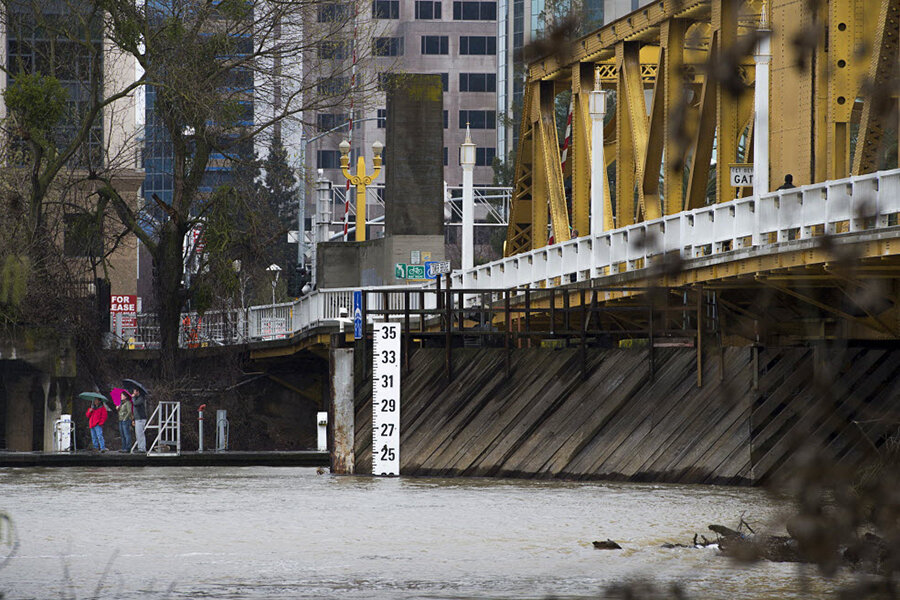Storms replenish key reservoirs amid California drought
Loading...
| San Francisco
Four straight days of rain have replenished several key reservoirs in Northern California, delighting a state in its fifth year of drought and raising hopes that water-use restrictions might be eased.
The series of storms that started late last week drenched the state, closing roads and schools while causing flooding and power outages.
Northern California was the hardest hit over four days. Other parts of the state saw the heaviest rainfall late last week.
Forecasters had issued an avalanche warning that expired Monday along the crest of the Sierra Nevada, where the highest peaks received up to 5 feet of snow over the weekend. The snowpack normally stores about 30 percent of the state's water supply.
As the latest storm weakened, warm temperatures and blue skies were forecast throughout California during the rest of the week.
The El Nino-related storms led to the death Sunday of a highway patrol officer who was struck while directing traffic on a snowy Sierra Nevada freeway.
Full reservoirs and lush snowpack in Northern California are critical for the entire state as the water eventually flows to the agriculture rich Central Valley and densely populated Southern California, which has seen relatively little rain this winter.
In Northern California, officials reported that lakes Shasta and Oroville haven't been as full since 2013.
Lake Shasta, the state's largest reservoir, was at 79 percent capacity and at 103 percent of its historical average for this time of year.
The 21-mile long reservoir north of Redding now holds 3.6 million acre-feet of water, enough to supply 3 million to 6 million households for a year.
"It's definitely welcome news, but it's kind of a mixed bag for us," said Shane Hunt, a spokesman for the US Bureau of Reclamation. "We still don't have water in all the right places to meet demand going into peak season."
For example, man-made Lake Melones in the Sierra Nevada foothills remains at just 22 percent of capacity and well below the historical average.
The state's second largest reservoir, Lake Oroville, was at 70 percent of capacity and 97 percent of its historical average. Folsom Lake, 25 miles northeast of Sacramento, was at 69 percent of capacity.
Gov. Jerry Brown ordered mandatory cutbacks of 25 percent in water use last year. George Kostyrko, spokesman for the State Water Resources Control Board, said the panel will reconsider restrictions in May.
"March is really looking good so far and we're hoping for an awesome April, but we can't revisit our regulations until the end of the water year, which is April," he said.
Heavy snow fell throughout the weekend in the Sierra Nevada, where California Highway Patrol officer Nathan Taylor died late Sunday after being struck Saturday by an out-of-control Nissan Pathfinder on Interstate 80 near Truckee, Calif.
The 35-year-old officer had been directing traffic around an accident when he was hit and knocked several feet into the air.
The weather was so bad that the officer had to be taken to a Reno, Nevada, hospital by ambulance instead of helicopter. Officer Taylor died after undergoing surgery.
The CHP said Taylor was married and had three sons, ages 3, 5, and 8.
"It is an incredibly sad day for Officer Taylor's family, the CHP, and the state of California," CHP Commissioner Joe Farrow said in a written statement. "The loss of an officer protecting our community is truly devastating."
The CHP is investigating.
Two people in Northern California died earlier this month in previous storms. One woman drowned after the car she was riding in drove into floodwaters in the Sacramento area. Another person was killed in the San Francisco Bay Area when a car jumped a roadway and hit trees.







